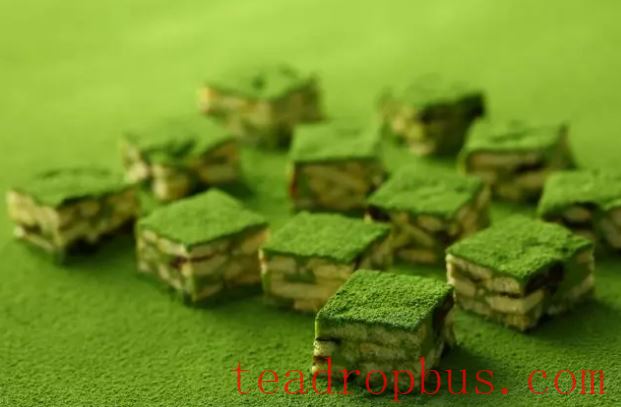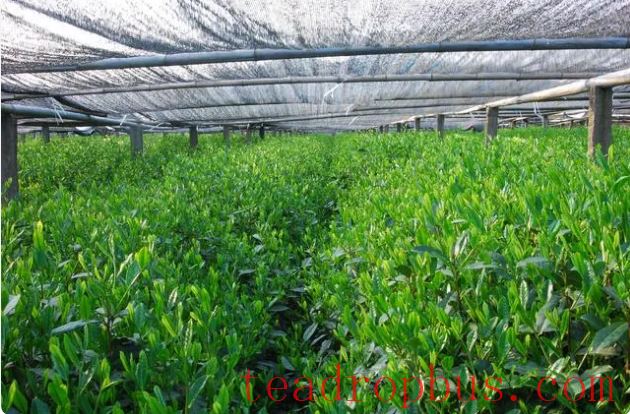“The development situation for matcha in 2025 is extraordinarily good,” says Yu Liao-yuan, head of the Tea Department at the Zhejiang Provincial Agricultural Technology Extension Center and a researcher. He excitedly presents a set of data to journalists: In 2025, Zhejiang Province produced over 4,200 tons of matcha, with an output value exceeding 600 million yuan, making it the world's largest matcha production base.
This year, the Zhejiang Provincial Government Work Report proposed “supporting historical classic industries such as silk, tea, yellow wine, celadon, wood carving, and Traditional Chinese medicine to achieve new glories.” Tea is among these historical classic industries, poised to rejuvenate itself with new vitality. This undoubtedly boosts the tea industry and adds more confidence to the development of matcha.
From the “Source of World Matcha” to the “Global Matcha Production Base,” Zhejiang has transcended history, riding the wave of matcha to recreate its classics.
Classic
Matcha, formerly known as “mocha” or “ground tea,” can be traced back to the Wei and Jin periods. The earliest written record appears in “Tea Classic – Six Drinking Methods” by Lu Yu of the Tang Dynasty: “There are rough teas, loose teas, ground teas, and cake teas. They are chopped, roasted, baked, and pounded, then stored in jars…” During long-term production practice, the people of the Tang Dynasty innovated the steaming method, which allowed for rapid and uniform fixation of the tea leaves, improving the quality of the tea. The invention of steaming technology was a significant advancement in the history of Chinese Tea-making techniques and remains one of the core processes in modern matcha production.

Matcha Products
Compared to the Tang Dynasty, the Song Dynasty made certain improvements to tea-making techniques. During the Northern Song period, mocha was ground from steamed tea cakes, while during the Southern Song period, it was ground from steamed loose tea. By the Yuan Dynasty, loose tea had surpassed tea cakes and became the primary type of tea produced. “People only used Jiangxi mocha and leaf tea from various places.” Simplified mocha and directly drinkable leaf tea became widely popular. Unlike the flourishing of Japanese matcha during the Azuchi-Momoyama period, Emperor Hongwu abolished tea cakes and promoted leaf tea in China, which meant that the production and consumption of mocha no longer fit the tea-drinking trends of the time. It gradually faded from daily life and became less documented until it was nearly forgotten.
The contemporary development of Chinese matcha began with the revival of steamed green tea production. In the 21st century, with increasing demand for matcha both domestically and internationally, matcha production blossomed across the country, including provinces like Zhejiang, Jiangsu, Guizhou, Hubei, Henan, and Anhui.
In 2003, the Zhejiang Provincial Tea Industry Association's Steamed Green Tea Branch was established; in 2004, the original Zhejiang Tea Company (now the Zhejiang Tea Group Co., Ltd.) built the first matcha production line in Wuyi County, Jinhua City, Zhejiang Province, starting commercial production of tencha. In 2006, as food companies began adding matcha to products like chewing gum and pastries, Zhejiang tea companies shifted their focus from exports to domestic sales, beginning large-scale production of matcha.
In today's increasingly competitive industry landscape, Zhejiang views matcha as one of its breakthrough points.
Breakthrough
“Zhejiang is a major and strong province in the tea industry in China, but for a long time, its tea production has focused primarily on high-quality teas made from single buds to one bud and two leaves, with a utilization rate of tea plant biological resources of less than 20%. This has been a significant challenge affecting farmers' income and the industry's efficiency,” says Yu Liao-yuan. “Matcha is a powdered, high-value tea product distinct from traditional teas, allowing for ‘eating instead of drinking' with over 90% utilization of tea plant biological resources. It is a new path toward increasing farmers' income and enhancing the tea industry's efficiency.” In Yu Liao-yuan's view, the matcha industry is a sunrise industry, not only improving the utilization rate of fresh leaves from late spring tea and summer-autumn tea but also enabling mechanized and digitalized tea production, and catering to the diverse tea consumption needs of young consumers.

Tea Garden
The special attention given to matcha stems from Yu Liao-yuan's research visit to Japan in 2012. “I found that the variety of matcha products in Japan is very rich, with matcha counters visible everywhere in malls,” he recalls.
At this point, matcha had already been developing in Japan for over a hundred years. In the ninth century, mocha was brought back to Japan by envoys sent to Tang Dynasty China and used as a refreshing beverage in temples. In the sixteenth century, Sen no Rikyu summarized and developed a new style of mocha consumption, transforming mocha into matcha, which evolved and was passed down in Japan, becoming a “fashion item.”
Seeing the incredibly diverse range of matcha products in Japan, Yu Liao-yuan quietly decided that Chinese matcha deserved development.
Around 2016, Zhejiang began focusing on matcha as a breakthrough point in tea industry development, working on the entire industrial chain related to matcha.
Invention
Lack of suitable varieties for matcha production, absence of specialized cultivation techniques, gaps in processing equipment and high-quality processing technologies for matcha and tencha, and a single product structure…the matcha industry faced a series of urgent problems.
To address the lack of dedicated varieties for Chinese matcha and short production periods, Yu Liao-yuan's team collaborated with research institutes to establish a production model using a combination of tea plant varieties including “Zhongcha 108 + Longjing 43 + Sohoku + Aurea Green,” featuring “ultra-early + early + mid-season + late-season varieties.” This extended the annual fresh leaf picking period for matcha by more than 100%, and increased the utilization rate of processing lines by over 80%. They strengthened planting management for matcha, covering aspects such as garden construction requirements, variety selection, tea garden management, fertilization methods, shading coverage, and pest and weed control, ensuring quality from the source.

Yu Liao-yuan, head of the Tea Department at the Zhejiang Provincial Agricultural Technology Extension Center and a researcher, evaluates matcha.
“Our team started by improving the quality of matcha and invented key energy-efficient processing equipment and technologies for Chinese matcha, achieving full domestication of processing equipment and standardization of technology,” he says. The first fully independently developed industrial production line for Chinese matcha was born. The “6CSN-400 Fully Automated Tencha Production Line,” capable of processing 10 tons of fresh leaves per day, has a production efficiency three times that of Japanese tencha production lines. They also developed a digital industrial production line for refined matcha with a daily processing capacity of 2 tons. “All core equipment was achieved for the first time with 100% domestic production, establishing an efficient and energy-saving processing equipment system for Chinese matcha, eliminating the risk of being ‘neck-pinned' in the production line,” explains Yu Liao-yuan.
In 2025, Yu Liao-yuan's project, “Innovation and Application of Key Technologies and Equipment for High-Quality Production of Chinese Matcha,” won the Second Prize of the Zhejiang Science and Technology Progress Award. This achievement involved joint efforts to improve fresh leaf quality, innovate processing technologies, and expand product applications, creating high-quality and efficient facility cultivation technologies for Chinese matcha. Tea garden management has become more standardized, and production and processing have become more efficient. The matcha industry continues to thrive and flourish.
In 1995, Japanese matcha